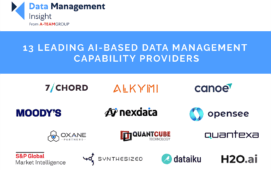Desjardins Group has signed a three-year deal with CounterpartyLink for the provision of legal entity data as part of a larger counterparty and issuer risk project that will also see Desjardins – the biggest co-operative financial group in Canada – implement SunGard Adaptiv Credit Risk.
CounterpartyLink’s data will first be used by Desjardins to ensure a single, unique legal entity identifier is assigned across all functional departments of the organisation, the vendor says. This data is then being integrated into SunGard Adaptiv. Once this is in production CounterpartyLink’s data will be available to Desjardin’s front, middle and back offices across its multiple business lines active in the financial markets.
Pierre Beaudoin, senior advisor, market and insurance risk management at Desjardins, says the firm’s aim through its counterparty and issuer risk project is to better “monitor risk at the issuer group level”. This requires it to upgrade its processes and the quality of its data in order to be able to do the kind of control and monitoring that until now it has been doing on a monthly basis, on a daily basis. “We have data flowing in from the broker side, the treasury side, the fund management side and the insurance side of our business – all the trading entities of the Desjardins Group, with all the usual problems of different naming conventions and identifiers,” he says. “We needed a big clean-up and we decided not to do it internally.”
During its review of the marketplace Desjardins collected sample data from several different vendors, Beaudoin says. “We analysed the format and the data provided, and compared it to our needs,” he adds. “We also interviewed the vendors over the phone. After that analysis we decided to go with CounterpartyLink, mainly because of its file format and the flexibility of it. The data fields suited our needs, and we were also impressed by its willingness to enhance its database to cover all our legal entities, since we are based in Quebec and Canada.”
CounterpartyLink provides 94 fields of validated data for each entity, covering name and address details, corporate hierarchy, registration and regulator details and a variety of other standard identifiers, including Swift BIC codes and CounterpartyLink’s own proprietary identifier.
This year, Desjardins is putting in production daily monitoring using the CounterpartyLink data “provided in one shot”, Beaudoin says. “We are not putting in place a daily process where we send data to and receive data from CounterpartyLink. We do plan to send another batch to them, but we will do that on an ad hoc basis. So for the first phase, we are doing a clean-up and then we will maintain the data internally until we go back again to CounterpartyLink.”
The next phase of Desjardins’ consolidated monitoring of counterparty and issuer risk will be in production a year from now, he continues. “We are using risk monitoring software we have purchased – SunGard Adaptiv Credit Risk – and are implementing this year. This will enable us to put in place a more robust process, the frequency of which has yet to be defined, whether monthly or weekly (it is less likely to be daily).”
The aim is to frequently check for new entities, Beaudoin adds. “We want to automate as much as possible the addition of new entities against which we have counterparty risk. We will be sending that data to and receiving it from CounterpartyLink, so in the second phase we will be making more frequent use of CounterpartyLink’s services.”
Any further phases are not yet formalised, he says. “For the time being we are focusing on counterparty and issuer risk. Down the road it is possible there will be processes we want to look at, covering a wider spread of products such as loans and deposits,” he concludes.
Subscribe to our newsletter




